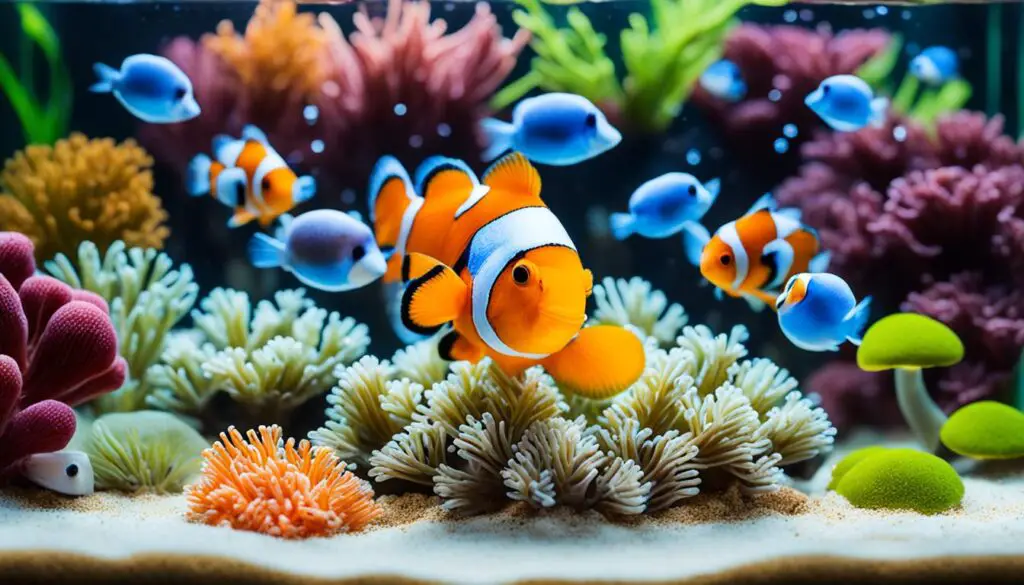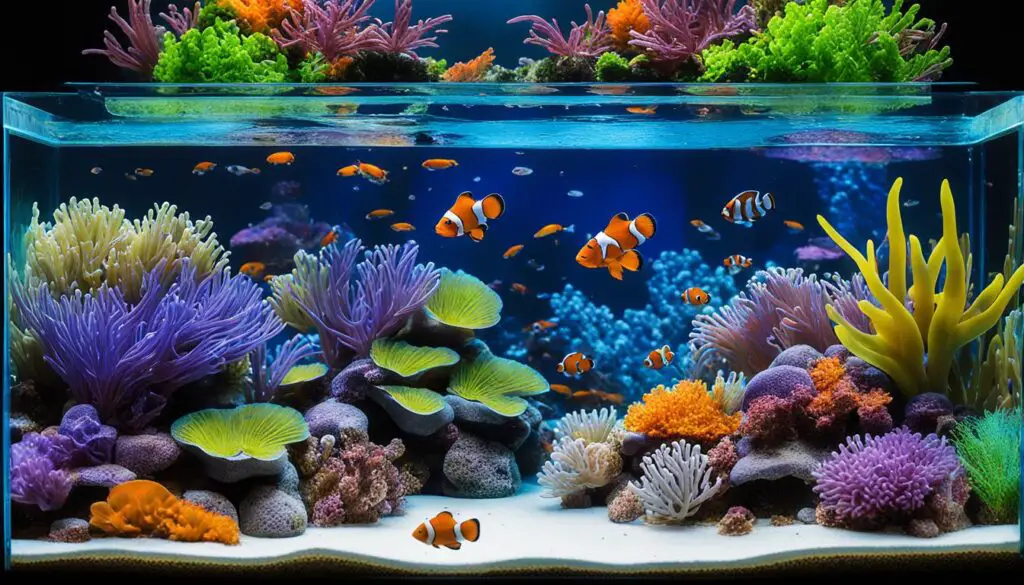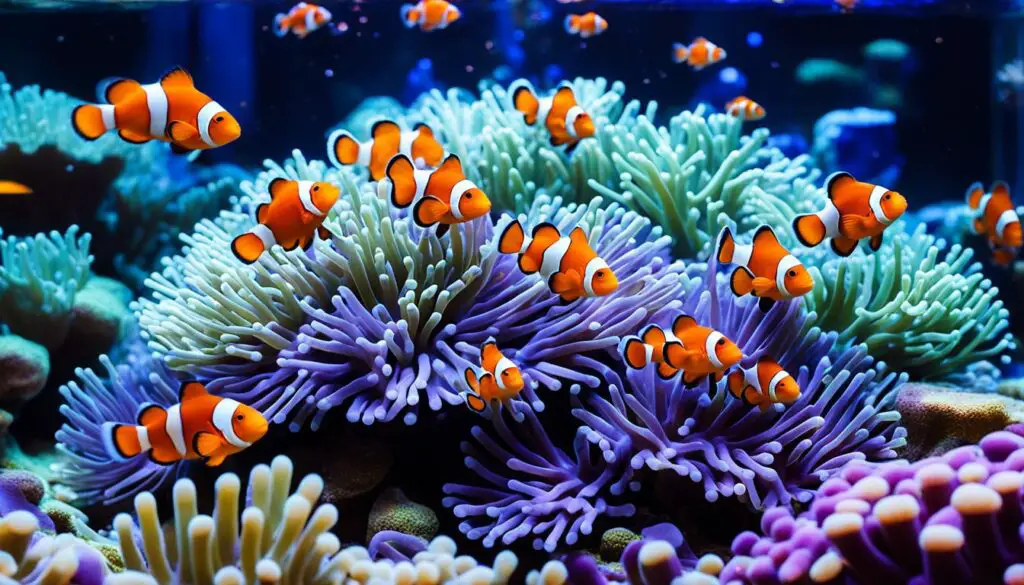What Type Of Jellyfish Are In Myrtle Beach

Introduction
What Type Of Jellyfish Are In Myrtle Beach: Myrtle Beach, nestled along the picturesque coast of South Carolina, is renowned for its sun-kissed shores, vibrant atmosphere, and the allure of the Atlantic Ocean. While this coastal gem is a popular destination for tourists seeking sand, surf, and seafood, it also beckons curious minds to explore the wonders of its underwater world. One of the questions that often arises among beachgoers and ocean enthusiasts is: “What type of jellyfish can be found in Myrtle Beach waters?”
Jellyfish are fascinating creatures that intrigue and occasionally concern those who venture into the ocean’s embrace. Myrtle Beach, with its warm, inviting waters, is home to various species of jellyfish, each with its unique characteristics and behaviors. Understanding these aquatic inhabitants is not only an interesting facet of marine biology but also essential for those enjoying the beach’s waves.
One of the most common jellyfish species encountered along the shores of Myrtle Beach is the moon jellyfish, scientifically known as Aurelia aurita. Moon jellyfish are distinguishable by their translucent, saucer-like bodies and delicate, trailing tentacles. These serene creatures are relatively harmless to humans, with their stinging cells causing only mild discomfort at most. Nevertheless, they provide a captivating sight as they glide through the water, propelled by rhythmic contractions.

Are the jellyfish in Myrtle Beach poisonous?
Though easily recognized, these animals are often misunderstood and feared by beach goers, even though most jellyfish in South Carolina waters are harmless.
Jellyfish in Myrtle Beach can vary in terms of their level of toxicity, but the majority of species found in the area are considered to be mildly venomous rather than highly poisonous. The most common jellyfish encountered along these shores, such as the moon jellyfish (Aurelia aurita), possess tentacles armed with nematocysts—stinging cells that can cause discomfort and skin irritation if they come into contact with human skin. However, the effects of these stings are generally mild and short-lived, resembling a sunburn-like rash with itching and redness. While the stings can be unpleasant, they rarely pose serious health risks, and most cases can be treated with simple remedies like rinsing the affected area with vinegar or applying a baking soda paste.
The Portuguese man-of-war, though not a true jellyfish but a siphonophore, is another jellyfish-like creature occasionally spotted in Myrtle Beach waters. It has tentacles armed with potent stinging cells that can deliver a more painful and intense sting. While not usually life-threatening, a Portuguese man-of-war’s sting can be extremely uncomfortable, leading to welts, pain, and, in rare cases, allergic reactions. If stung by a Portuguese man-of-war, it’s advisable to seek prompt medical attention and rinse the affected area with vinegar.
Myrtle Beach waters are not considered highly poisonous, their stings can vary in intensity from mild irritation to more severe discomfort. Beachgoers and swimmers are encouraged to exercise caution, be mindful of their surroundings, and take preventative measures such as wearing protective swimwear, staying informed about local conditions, and seeking immediate medical attention in case of more serious stings. Overall, with proper awareness and preparedness, the presence of jellyfish should not deter one from enjoying the beautiful beaches and waters of Myrtle Beach safely.
What kind of jellyfish does Myrtle Beach have?
Waters around Myrtle Beach can hold a variety of sea life including harmless cannonball jellyfish and venomous Portuguese man o’ wars. Cannonball jellyfish are the most common in South Carolina and are white and round with a brown or purple band.
Myrtle Beach is home to a variety of jellyfish species, adding to the intrigue and diversity of its coastal ecosystem. Among the most commonly encountered jellyfish in these waters is the moon jellyfish, scientifically known as Aurelia aurita. Recognizable by its translucent, saucer-like bell and trailing tentacles, the moon jellyfish is typically benign to humans, its mild stings akin to a mild sunburn. Their gentle, rhythmic pulsations make them a mesmerizing sight as they gracefully float through the water.
The moon jellyfish, Myrtle Beach occasionally welcomes a more formidable visitor – the Portuguese man-of-war. Despite resembling a jellyfish, the Portuguese man-of-war is actually a siphonophore, a colonial organism with a striking blue or purple float that often washes ashore. This creature possesses potent, long tentacles concealed beneath the water’s surface, equipped with powerful stinging cells. Encounters with Portuguese man-of-war can result in painful stings, and in rare instances, they may lead to allergic reactions, necessitating immediate medical attention.
The presence of these jellyfish species in Myrtle Beach’s waters underscores the area’s rich marine biodiversity, inviting beachgoers, naturalists, and families to explore and appreciate the intricate web of life within the Atlantic Ocean. These jellyfish species, with their distinct characteristics and behaviors, offer insights into the remarkable world of marine life. Whether they evoke wonder, caution, or curiosity, Myrtle Beach’s jellyfish inhabitants contribute to the unique allure of this coastal destination, reminding us of the beauty and complexity of the natural world awaiting exploration beneath the waves.
What to do if you get stung by a jellyfish in Myrtle Beach?
Remove any tentacles immediately, but don’t rub the affected area. That stimulates the venomous barbs even more. Use only seawater to help remove the barbs. Apply vinegar or rubbing alcohol to the affected area.
If you find yourself stung by a jellyfish while enjoying the waters of Myrtle Beach, First and foremost, exit the water to prevent further stings. It’s crucial to stay calm despite the initial pain or shock. Once out of the water, here are some steps to follow:
Rinse with Vinegar: The most immediate and effective remedy for jellyfish stings is to rinse the affected area with vinegar. This helps to neutralize the toxins and tentacle remnants left on the skin. Many beachfront areas have vinegar stations available for this purpose.
Do Not Scrub: Avoid rubbing or scraping the sting area, as this can cause the release of more toxins.
Apply Heat: After vinegar treatment, applying heat can help alleviate pain. You can immerse the affected area in hot water (not scalding) or use a hot compress. The heat helps to break down the venom and reduce pain.
Over-the-Counter Pain Relievers: If the pain persists, you can consider taking over-the-counter pain relievers like ibuprofen or acetaminophen.
Seek Medical Attention: If the sting is from a Portuguese man-of-war or if you experience severe pain, allergic reactions, or other concerning symptoms, it’s advisable to seek immediate medical attention. Do not hesitate to contact local emergency services or visit the nearest healthcare facility.
Observe for Allergic Reactions: Watch for signs of an allergic reaction, such as difficulty breathing, swelling of the face or throat, hives, or a rapid pulse. If any of these symptoms occur, call for emergency help immediately.
Preventing jellyfish stings is always the best approach. Wearing protective swimwear, staying informed about local conditions, and heeding any warnings or advisories from lifeguards can reduce the risk. Myrtle Beach is equipped to handle jellyfish stings, and beachfront areas often provide supplies for first aid. Being prepared and knowing how to respond to a jellyfish sting can help ensure that a minor inconvenience doesn’t disrupt your beachside enjoyment.
Why are jellyfish so bad in Myrtle Beach?
Weeks says Cannonball Jellyfish stranding’s are common May through August, particularly after storms. “So anytime we see periods of strong onshore winds or storms offshore that would cause currents pushing jellyfish onto the beaches we’ll see stranding’s,” says Weeks.
Jellyfish are not necessarily “bad” in Myrtle Beach; they are a natural part of the coastal ecosystem. However, their presence can sometimes lead to concerns and inconveniences for beachgoers. Myrtle Beach’s susceptibility to jellyfish encounters can be attributed to several factors.
Firstly, the warm waters of the Atlantic Ocean that bathe the shores of Myrtle Beach create an environment conducive to jellyfish proliferation. Many jellyfish species thrive in the temperate to warm waters of the region, making their presence more common.
Secondly, ocean currents and tides can influence the movement of jellyfish, sometimes bringing them closer to the shoreline. Wind patterns and water temperature changes can also affect the abundance and distribution of jellyfish in the area.
Myrtle Beach’s popularity as a tourist destination means a larger number of people entering the water. With more people in the ocean, the chances of encountering jellyfish naturally increase.
While jellyfish encounters are a part of the coastal experience, Myrtle Beach authorities take measures to mitigate the risks and offer guidance on what to do if stung. It’s essential for beachgoers to remain informed about local conditions, and be prepared to respond to stings. By being and taking precautionary steps, Myrtle Beach’s natural beauty and its diverse marine life, including jellyfish, while minimize any potential inconveniences.
What is the most common jellyfish in Myrtle Beach?
Of Natural Resources, jellyballs are the most common jellyfish in coastal South Carolina waters, and conditions have been just right this spring for large numbers to populate off our coastline, such conditions as warm waters and plenty of food.
The most common jellyfish species found in the waters of Myrtle Beach is the moon jellyfish, scientifically known as Aurelia aurita. These graceful marine creatures are characterized by their translucent, saucer-shaped bell and a network of fine, trailing tentacles.
Moon jellyfish are frequently encountered by swimmers and beachgoers along the coastline. Their relatively mild stings, akin to a mild sunburn, are generally not harmful to humans and often result in minor skin irritation. These jellyfish have a rhythmic pulsing motion, which adds to the mesmerizing beauty of Myrtle Beach’s aquatic environment.
While there are other jellyfish species that occasionally make appearances in the area, the moon jellyfish stands out as the most prevalent and recognizable marine resident, making them an integral part of the unique marine life tapestry that adorns the shores of this popular South Carolina beach destination. when encountering these moon jellyfish and the surrounding marine ecosystem to ensure an enjoyable and safe beach experience.
Do box jellyfish live in Myrtle Beach?
Also called the box jelly due to its cube-shaped bell, sea wasps are the most venomous type of jellyfish found in South Carolina, with it’s sting sometimes being severe enough to require hospitalization. While mostly found in tropical climates, wind and ocean currents can send them into coastal parts of the state.
Box jellyfish, known for their highly venomous stings and predominantly found in the Indo-Pacific region, are not native to the waters of Myrtle Beach or the broader Atlantic Ocean. While Myrtle Beach hosts a diverse array of marine life, including various jellyfish species like the moon jellyfish and the Portuguese man-of-war, box jellyfish are not typically found in this region.
These creatures are renowned for their potent toxins, and their presence can pose serious risks to swimmers and beachgoers. Myrtle Beach, on the other hand, is more commonly associated with relatively mild jellyfish stings, like those from the moon jellyfish or the Portuguese man-of-war, which, although painful, are not typically life-threatening.
Nonetheless, the waters of Myrtle Beach to remain vigilant and informed about the local marine conditions and potential hazards. While the risk of encountering box jellyfish is quite low in this area, other jellyfish species can still be present, making take necessary precautions and know how to respond in the event of a jellyfish sting.
What is the moon jellyfish in Myrtle Beach?
The moon jellyfish are often found washed up and withered on the beach even though they are not fragile animals. They survive long sea journeys and battering by waves. Its umbrella may be as large as 18 inches across and looks like a flying saucer.
The moon jellyfish, scientifically known as Aurelia aurita, is a commonly found species of jellyfish in the waters of Myrtle Beach. These intriguing marine creatures are known for their captivating, translucent appearance, featuring a saucer-shaped bell and a network of delicate, trailing tentacles. Moon jellyfish are a distinctive and graceful presence in the coastal ecosystem, and they often grace the waters along Myrtle Beach’s shores, making them a familiar sight to swimmers and beachgoers.
One of the notable characteristics of moon jellyfish is their relatively mild stinging ability. While their tentacles do contain nematocysts—stinging cells that can cause skin irritation—their stings are generally not harmful to humans and are often compared to a mild sunburn. Beachgoers may experience some discomfort, redness, or itching if they come into contact with moon jellyfish tentacles, but these effects are typically short-lived and manageable.
Moon jellyfish are fascinating to observe as they gracefully drift through the water, moving in response to ocean currents. Their rhythmic pulsations create an enchanting spectacle, drawing the attention of those who appreciate the beauty of the underwater world. While Myrtle Beach is home to a variety of marine life, the moon jellyfish is one of the most iconic and benign residents, offering beachgoers the opportunity to appreciate the delicate balance of nature along the South Carolina coast. as they are an integral part of the diverse marine ecosystem that contributes to the charm of Myrtle Beach’s natural beauty.
What stings you in Myrtle Beach?
Jellyfish and sea lice can be painful nuisances in Myrtle Beach but are avoidable. Here’s how. Painful sea lice and jellyfish stings can ruin the mood of a day on Myrtle Beach sands. Recently, a Portuguese man o’ war was spotted in North Myrtle Beach.
In Myrtle Beach, like many coastal areas, there are several marine organisms that have the potential to deliver stings or discomfort to beachgoers and swimmers. The most common culprits include jellyfish such as the moon jellyfish (Aurelia aurita), which possess nematocysts in their tentacles that can cause mild skin irritation akin to a sunburn. While these stings are generally not harmful, they can be uncomfortable. Another species occasionally encountered is the Portuguese man-of-war, which is not a true jellyfish but a siphonophore. Their tentacles have potent stinging cells and can cause more painful stings. In some rare cases, severe allergic reactions can occur, necessitating immediate medical attention.
Other potential stinging culprits in Myrtle Beach waters may include various sea creatures like certain species of sea anemones, corals, or even small stinging hydroids that are found in and around the coastal ecosystem. The risk of stings is relatively low, Taking simple precautions like wearing protective swimwear and heeding any warnings or advisories from lifeguards can help minimize the risk of stings and ensure a safer and more enjoyable beach experience.

Conclusion
The diverse array of jellyfish species inhabiting Myrtle Beach’s coastal waters adds a unique dimension to the already enchanting beach experience. From the tranquil moon jellyfish to the striking Portuguese man-of-war, these marine creatures offer both beauty and occasional challenges to those who venture into the sea.
Myrtle Beach’s natural environment is a testament to the wonders of the ocean, and its jellyfish inhabitants exemplify the delicate balance of nature. Understanding and respecting these oceanic residents is not only vital for our safety but also an opportunity to deepen our connection with the marine world. As we embrace the sun and surf, exercising caution when necessary, and appreciating the intricate web of life that surrounds us.
Myrtle Beach’s jellyfish populations provide a window into the captivating world of marine biology. It’s a reminder of the interconnectedness of life on Earth, where each species plays a role in the delicate tapestry of the natural world. These encounters with jellyfish, whether fleeting or more intimate, offer valuable lessons about the environment.



